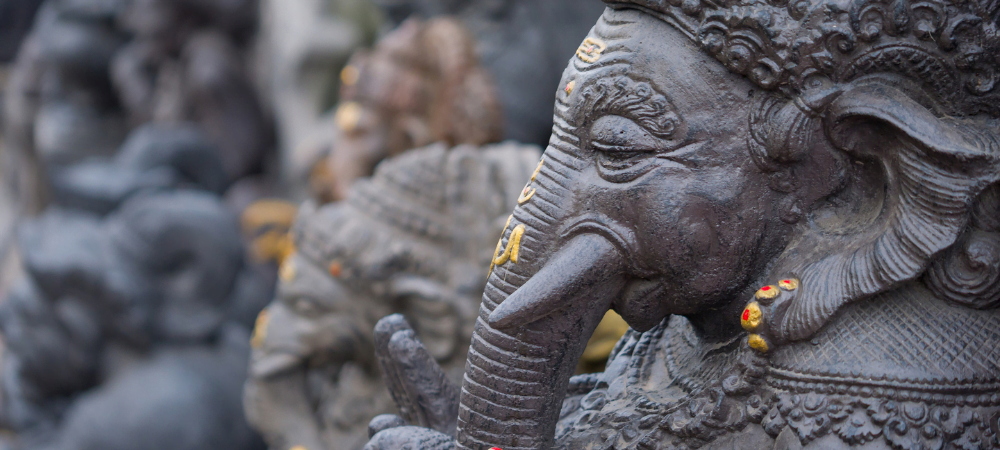The Art and Culture Scene of Seminyak
Welcome to the vibrant and captivating world of Seminyak, a small yet bustling beach town nestled on the sun-kissed shores of Bali, Indonesia. Renowned for its luxurious resorts, vibrant nightlife, and exuberant food scene, Seminyak has long captured the hearts of travellers from around the globe. But beyond its pristine beaches, luxury villas, and chic boutiques lies an untapped wealth of rich cultural heritage and an invigorating art scene waiting to be explored.
Seminyak is a tapestry woven with threads of tradition and creativity, where age-old cultural customs effortlessly blend with contemporary artistic expressions. From the resonating sounds of traditional gamelan music to the enchanting visual spectacles found in local art galleries, Seminyak’s art and culture scene provides a vibrant and colourful backdrop to this tropical paradise.
In this blog post, we’ll take you on an enchanting journey through Seminyak’s thriving art scene and rich cultural heritage, inviting you to dive deeper and uncover the town’s soul, which lies beyond its sun-soaked beaches and luxe retreats. Prepare to be inspired by the captivating blend of old and new, tradition and innovation, that makes Seminyak an irresistible destination for culture and art enthusiasts alike.
The Art Scene in Seminyak
The island of Bali has long been a magnet for artists, drawn to its unique aesthetic, its vibrant natural beauty, and the ever-present spiritual life of its inhabitants. Seminyak, often touted as one of Bali’s most fashionable districts, is no exception. Here, traditional Balinese art forms blend seamlessly with contemporary expressions, resulting in a dynamic and diverse artistic landscape.
The art scene in Seminyak is as eclectic as it is fascinating. Paintings, sculptures, installations – the array of art forms you’ll find in this bustling town is a testament to the creative spirit of its people and the diverse influences that have shaped it. This cultural melting pot is home to a number of talented local artists who draw inspiration from their Balinese heritage while also embracing global art trends.
Visitors have a plethora of opportunities to immerse themselves in the local art scene. Art galleries, showcasing both traditional and contemporary works, abound in Seminyak. Nyaman Gallery is one such space that offers a diverse range of artwork from emerging and established Indonesian artists. Reservoart Gallery, another noteworthy space, displays an impressive collection of contemporary and abstract art. A stroll down the vibrant streets of Seminyak will also reveal an array of striking street art, further demonstrating the town’s artistic flair.
Yet, the art in Seminyak is not just to be observed; it’s to be lived. The town offers a variety of art workshops for visitors eager to experience Bali’s artistic traditions first-hand. From traditional Batik painting to wood carving and silver jewellery making, there are plenty of opportunities to learn, create, and be inspired.
Whether you are an avid art connoisseur or simply a curious traveller, Seminyak’s vibrant art scene offers a compelling glimpse into Bali’s rich artistic heritage and its innovative present. Each piece of art, each artist, and each gallery carries a story waiting to be discovered, providing a multi-layered and colourful insight into the heart of Balinese culture.
The Cultural Scene in Seminyak
Just as vivid as its art scene, Seminyak’s cultural heritage paints a fascinating portrait of a community deeply rooted in tradition. Balinese culture is an intricate tapestry of age-old customs and rituals, spirituality, music, dance, and craft, all of which are interwoven into the fabric of everyday life in Seminyak.
Understanding Balinese culture begins with recognising the importance of local customs and traditions. Seminyak, like the rest of Bali, is heavily influenced by Hindu philosophy and religious practices, which shape daily routines, social interactions, and significant life events. Visitors can witness these customs during local village temple ceremonies, where offerings, music, dance, and communal feasting signify an intrinsic connection between the spiritual and material worlds.
Not to be missed are the vibrant cultural festivals and events that take place throughout the year in Seminyak. The Galungan festival, which marks the victory of dharma over adharma (good over evil), fills the streets with ornately decorated bamboo poles, called ‘penjor’. The Kuningan festival, celebrated ten days after Galungan, concludes the holiday period with prayers, offerings, and special performances. Nyepi, or the Day of Silence, offers a stark contrast as the entire island comes to a standstill in a day of quiet reflection.
The performing arts hold a special place in Balinese culture, and Seminyak offers plenty of opportunities to experience this first-hand. The rhythmic gong of the gamelan, a traditional music ensemble, provides a melodious soundtrack to the town, while performances of classical dance dramas such as Legong, Kecak, and Barong offer captivating narratives of mythology and moral tales.
Seminyak is also a hub for traditional craft and textile industries, with Batik making, silversmithing, and wood carving playing a significant role in the local economy. These age-old techniques passed down through generations, continue to thrive in Seminyak, producing exquisite works of art that capture the essence of Balinese culture.
Cultural Heritage and Architectural Wonders
A tour of Seminyak would not be complete without a journey through its remarkable cultural landmarks and architectural wonders, tangible embodiments of the town’s historical and cultural legacy.
Begin your cultural exploration with a visit to Pura Petitenget, an enchanting sea temple located at the end of Jalan Petitenget. Steeped in mystique, this centuries-old temple is an important link in Bali’s series of sea temples and an active site of worship, particularly during the temple’s biannual ceremonies. Its intricate stone carvings and serene seaside setting offer a glimpse into the spiritual heart of Balinese society.
A short distance from Seminyak, you’ll find Pura Masceti, a ‘Pura Kawitan’ or ancestral temple of special significance to the Subak (the organisation of rice farmers in Bali). This peaceful temple complex showcases the timeless architecture of Balinese temples, with its multi-tiered meru (towers), intricately carved stone gates, and expansive gardens.
The charm of Seminyak’s architecture extends beyond its temples to its traditional Balinese homes and villas. The concept of ‘Desa Kala Patra’ – meaning a harmonious relationship between humans, God, and their environment – heavily influences Balinese architecture. This philosophy can be observed in the layout of traditional Balinese homes, where different pavilions, each serving specific purposes, are arranged around a central courtyard in accordance with sacred directions. Many luxury villas in Seminyak echo this architectural design, blending traditional elements with modern comforts.
Moreover, Seminyak’s streets are lined with unique examples of ‘Tropical Modern’ architecture, where international design elements are fused with traditional Balinese materials and techniques. These structures, ranging from boutique hotels to shopping complexes, contribute to the dynamic architectural landscape of Seminyak.
The Intersection of Art, Culture, and Tourism in Seminyak
As a thriving tourist hotspot, Seminyak has evolved into a compelling blend of traditional and contemporary, local and global. The inflow of travellers has undeniably impacted Seminyak’s art and culture scene, yet it’s a relationship that bears mutual benefits and challenges.
Tourism in Seminyak has been a catalyst in preserving and promoting Balinese arts and culture. It provides a platform for local artists to showcase their talents and for traditional craft industries to flourish. Cultural performances once held mainly in village temples, now captivate international audiences, enhancing their appeal and ensuring their continuity.
Simultaneously, tourism encourages cultural exchange and global influence, evident in the fusion of styles seen in Seminyak’s art scene. International artists who visit or settle in Bali contribute to the island’s dynamic art landscape, bringing new techniques and perspectives that enrich the local art scene.
However, the intersection of tourism with art and culture isn’t without its challenges. The pressure to cater to tourist tastes can potentially lead to the commodification of culture and loss of cultural authenticity. It is, therefore, the responsibility of both visitors and locals to approach this exchange respectfully, valuing and preserving the integrity of Balinese culture.
As a visitor to Seminyak, there are many ways you can support the local art and culture. Attend traditional performances, visit art galleries, participate in workshops, and purchase local handicrafts. But do so respectfully, understanding the cultural significance and origin of the art forms.
FAQ
Can visitors participate in any traditional Balinese art workshops?
Yes, visitors can participate in traditional Balinese art workshops. Bali is rich in arts and crafts, and there are numerous workshops available where visitors can learn traditional Balinese art forms such as wood carving, batik painting, and silver jewelry making. Ubud, in particular, is a hub for cultural workshops, but you can find various opportunities in different parts of Bali, including Seminyak. It’s a wonderful way to immerse yourself in Balinese culture and create your own piece of art to take home. Always ensure to book workshops through reputable providers.
How is the traditional art form of Batik created in Bali?
Batik is a traditional Indonesian art form that involves using a wax-resist dyeing technique on cloth. In Bali, creating Batik involves applying wax to fabric in specific patterns, then dyeing the fabric. The areas covered in wax resist the dye and remain the original color. This process can be repeated with different colors and patterns to create intricate designs. Once the final dyeing is complete, the wax is removed, revealing a stunning, multi-colored, patterned fabric. Batik-making in Bali often incorporates traditional and religious motifs, with each pattern and colour having specific meanings.
What is the significance of statues and sculptures found around Bali?
Statues and sculptures in Bali hold significant cultural and spiritual meanings. They often depict gods, goddesses, and mythical creatures from Hindu epics and are commonly placed in temples, at intersections, and other strategic points to ward off evil spirits. They also serve to illustrate moral and spiritual stories to the community. Additionally, statues and sculptures are employed in various ceremonies and festivals to honor deities and ancestors. Their design, placement, and usage are deeply embedded in Balinese Hinduism and local beliefs, reflecting a syncretism of religion and art.
- Welcome Back To My Villas in Bali - November 17, 2021





